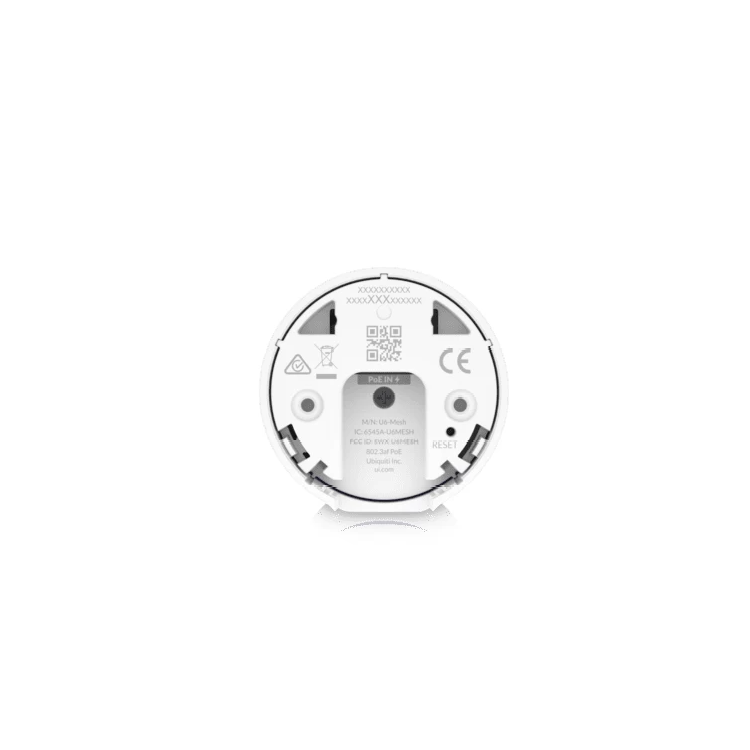UniFi Access Point WiFi 6 Mesh
The Ubiquiti UniFi 6 Mesh makes it easy to expand coverage and improve performance easily of a current WiFi network The UniFi 6 Mesh Access Point features the latest WiFi 6. The Dual-Band works on 5GHz (4×4 MU-MIMO and OFDMA)and on 2.4GHz (2×2 MIMO) and speeds run up to 4.8 Gbps (5GHz) and 574 Mbps (2.4GHz). The access point also makes the most of 4×4 MIMO by using 160 MHz channels. This results in extra-high capacity wireless uplinks and faster data transmission.
Features Ubiquiti U6 Mesh:
- WiFi 6 (802.11ax) mesh access point
- Operates at 5GHz (4×4 MU-MIMO and OFDMA)
- Operates at 2.4GHz (2×2 MIMO)
- Speeds up to 4.8 Gbps (5GHz) and 574 Mbps (2.4GHz)
- Operates on 4×4 MIMO with 160 MHz bandwidth
- Maximum transmit power: 26dBm/400mW
- 1x Gigabit LAN port, supports 802.3af PoE power supply
- Management via UniFi Network Controller
Suitable for indoor and outdoor use
The Ubiquiti U6 Mesh has a slim and compact design which can be unobtrusively mounted on wall, desktop or pole in any home or office. However, thanks to the IPX5 certified housing, it is also possible to use the access point outdoors; ideal for in the garden or on a terrace for example.
Less interference with OFDMA
With OFDMA, WiFi 6 access points not only deliver higher-volume data packets, but decompose and deliver tactical data to multiple devices simultaneously, dramatically improving their upload and download speeds. Create and support more than 300 different client connections.
Management via Unifi Network Controller
The U6-Mesh access point integrates seamlessly with the free UniFi Network Application and simplifies network bridging. Manage the Ubiquiti UniFi 6 Mesh access point via the free UniFi Network Controller software (version 5.14.3 or higher). Using the management platform, the access point can be configured and a complete overview of the entire network is available. Perform firmware updates remotely and gain insight into all network users and guests. It is also possible to set up a guest network for visitors.
Supporting documents











